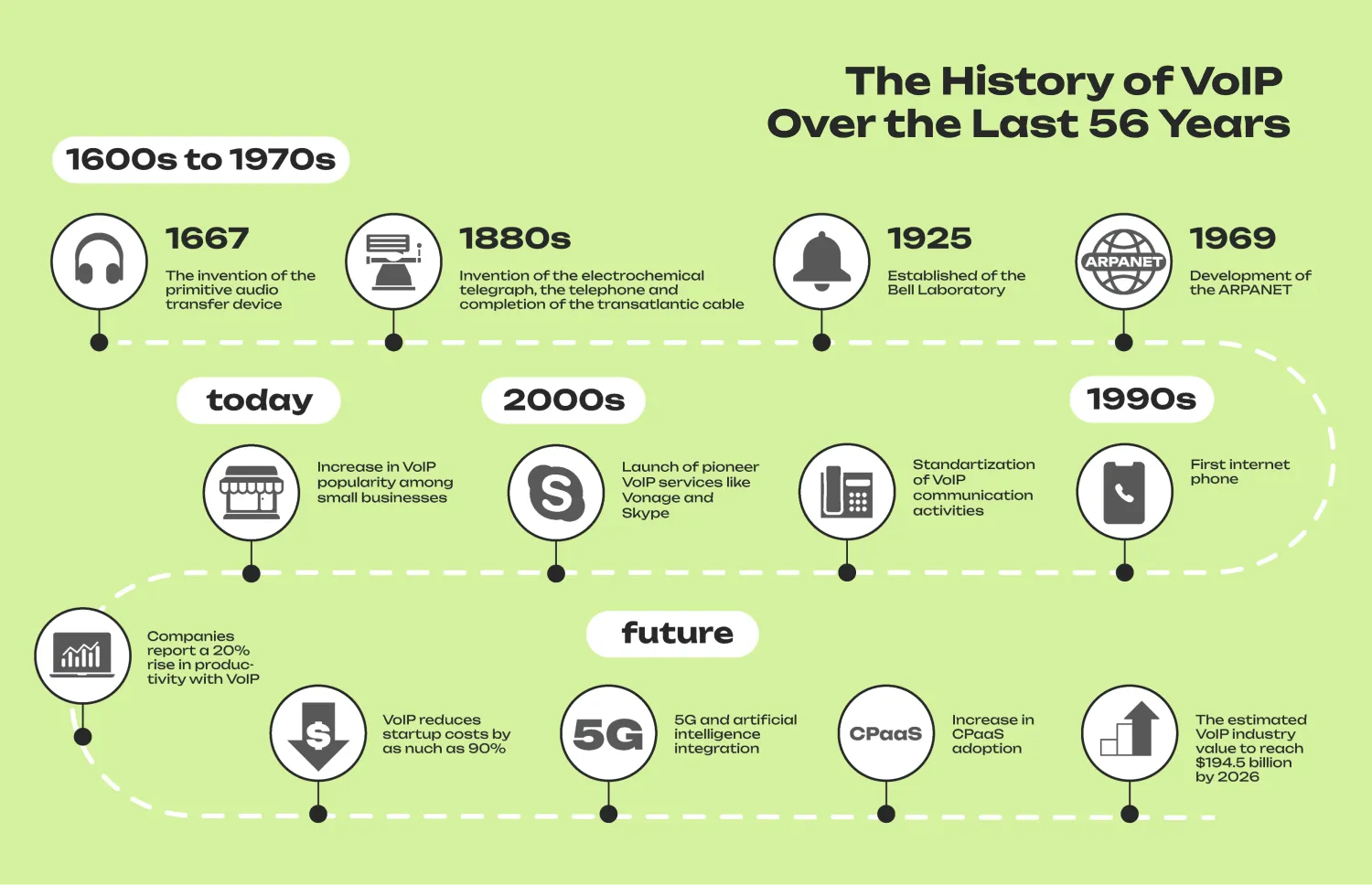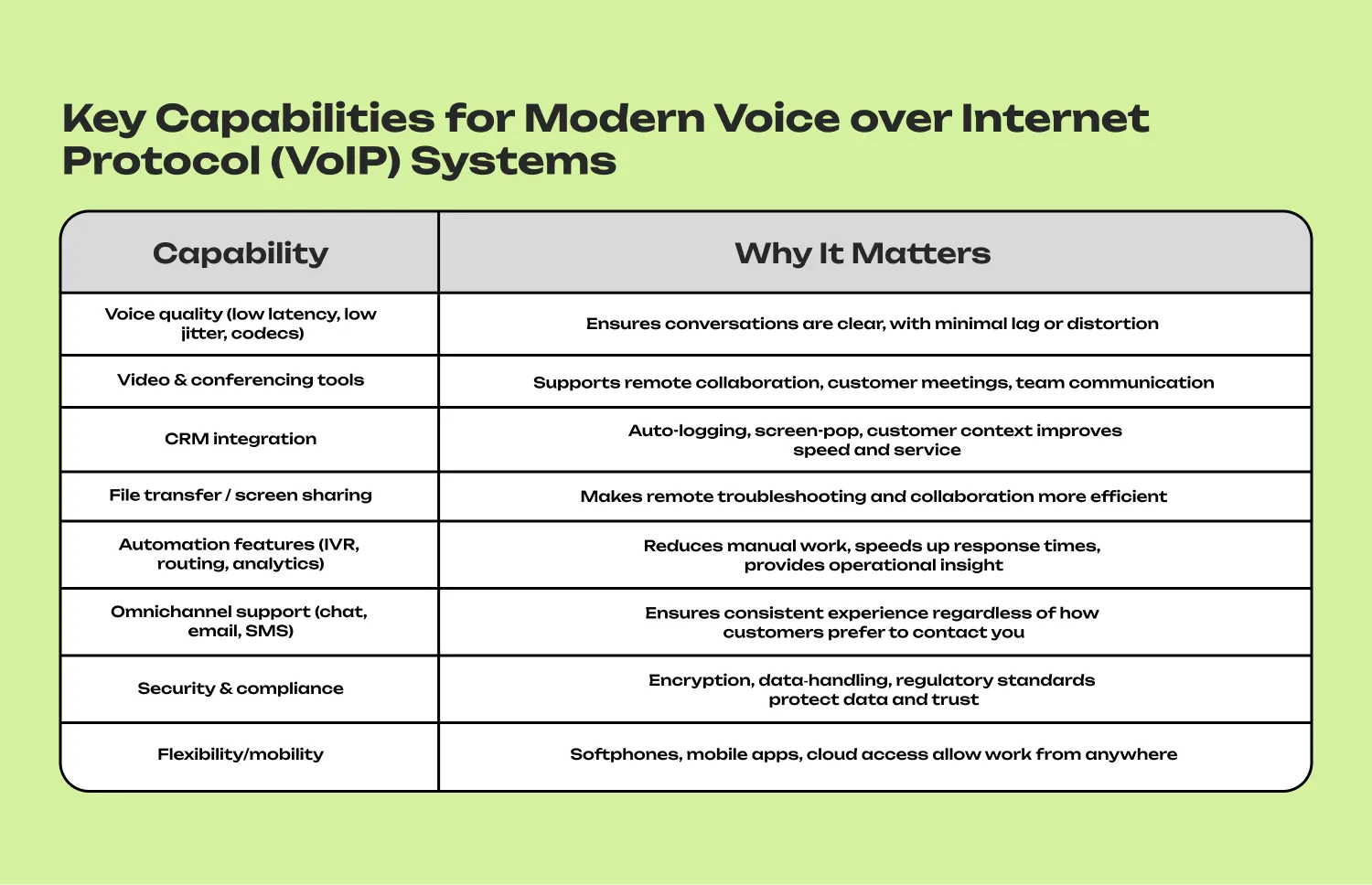Thank you!
The form has been successfully submitted
The form has been successfully submitted
Oops! Something went wrong, please try again
.webp)
Voice over IP, Voice over Internet Protocol (VoIP) is the technology that allows voice communications to travel over internet protocol networks instead of traditional phone lines. Its origins date back to the mid-1990s when companies like VocalTec developed software that enabled PC-to-PC voice calls. Early internet telephony was limited — low bandwidth, big delays, basic voice only, but it laid the groundwork for what came next.
In the 1990s, Voice over Internet Protocol (VoIP) was a novelty: people installed software on PCs, used headsets, and hoped their internet connections were stable. These tools allowed bypassing high long-distance and international call charges. But quality was inconsistent. As broadband spread in the early 2000s, improved codecs, better latency, and dedicated IP-based communication hardware improved voice clarity. Then services like Skype popularized voice, video, and messaging in one platform.

Voice over Internet Protocol (VoIP) integrations with CRM systems transformed calls into data. When a call arrives, the CRM can pop up customer history, record the interaction, tag the reason for the call, and even assign follow-ups automatically. Businesses gain insights into call trends, response times, and customer satisfaction in ways that were impossible with traditional PBX alone.
Automation became essential. internet telephony systems started offering call routing based on rules, IVR (Interactive Voice Response), voicemail-to-email, automatic recording, and analytics dashboards. These features reduce manual work, improve response times, and offer measurable metrics for managing support or sales teams.
DID Global tip: Before selecting tools, map common use cases (customer inquiry, support escalation, sales callback) and test how each provider’s automation handles them.
Modern internet telephony transcends voice. It includes HD video calls, team conferencing, screen sharing, file transfer, chat, presence indicators, and real-time collaboration. Unified Communications as a Service (UCaaS) is often built upon digital telephony platforms but adds messaging, video, resource scheduling, and analytics. Real-time multimedia is standard, and endpoints span laptops, mobile apps, web clients, and hardware phones. This technology is no longer just “making calls” — it’s running all modes of communication through a single system.
As customers today expect to interact via chat, email, voice, video, and even messaging apps, IP-based communication platforms serve as the central node tying these channels together. With integrations into helpdesk tools, social media, SMS, and voice, internet telephony solutions ensure consistency: agents see the full context of a customer journey regardless of which channel the customer used first. For businesses, this means fewer dropped messages, faster resolution, and a unified brand voice across touchpoints. DID Global invests in these omnichannel capabilities, ensuring data from every channel funnels into common dashboards and workflows.

Looking ahead, internet telephony will lean heavily into AI, automatic transcription, sentiment analysis, virtual agents, augmented reality conferencing, and more immersive collaboration. Bandwidth will increase via 5G and beyond, reducing latency and improving video quality. Also, security will become more integrated: end-to-end encryption, blockchain-based verification, identity-assurance, and compliance built into the platform by default. Voice over Internet Protocol (VoIP) will evolve into the backbone of all business communication, not just voice or video.
To stay ahead, businesses should audit their current systems: voice infrastructure, network capacity, security posture, user endpoints. Training staff for new tools is critical—softphones, unified dashboards, VR/AR calls require different mindset and workflows. Evaluate providers not just for current needs but also adaptability: how will updates, security patches, and future integrations be handled? Companies should pilot new Voice over Internet Protocol (VoIP) functionalities like AI-IVR or video conferencing in small teams before rolling out across the organization.
Case in point: At DID Global, our team rolled out unified voice, video, and chat for a mid-sized tech startup. Agents now switch between voice and video seamlessly, internal chats tie into support tickets, and customer feedback improved by 25% in the first two months.
Checklist — Key Capabilities for Modern Voice over Internet Protocol (VoIP) Systems

Voice over Internet Protocol (VoIP) has come a long way — from shaky audio calls to advanced platforms that merge voice, video, and data into one ecosystem. For businesses, the question is no longer whether to adopt this technology, but how fast to embrace its full potential.
The companies that act now will be the ones shaping the communication standards of tomorrow. Are you ready to unlock the future of digital communication with modern internet telephony?
👉 Explore DID Global’s VoIP solutions and see how we can help your business scale communication smarter, faster, and more securely.